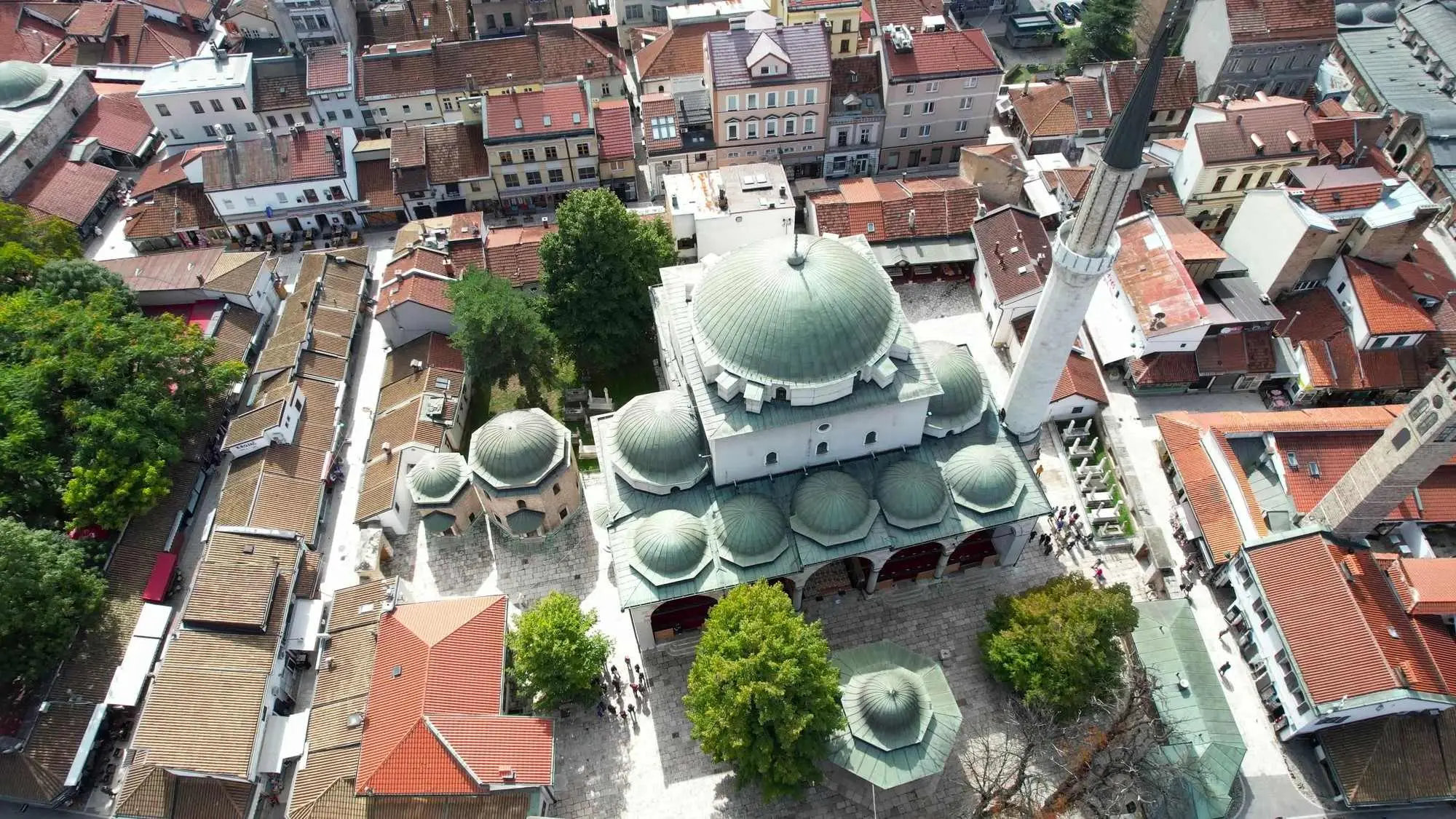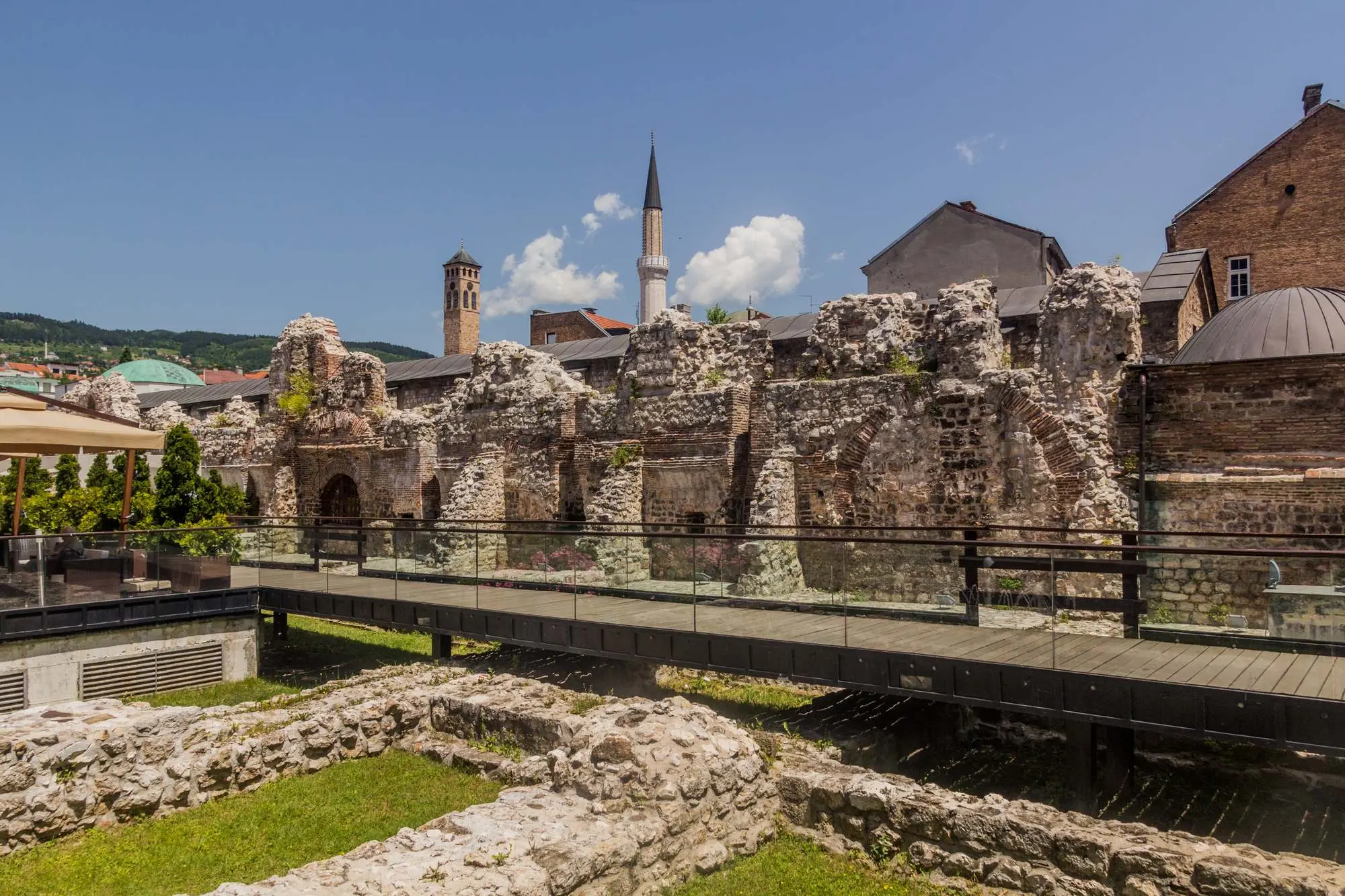What is Tašlihan and why is it an important destination to visit in Sarajevo?
Sarajevo is a city rich in history, and one of its hidden gems is Tašlihan – the remains of a former caravanserai that bears witness to Ottoman urbanism and commercial power. This han was a key part of the commercial complex in the heart of Sarajevo, and its history is closely linked to one of the most significant benefactors in the history of Bosnia and Herzegovina – Gazi Husrev-beg.
WHO WAS GAZI HUSREV-BEG?
Gazi Husrev-beg was the Ottoman governor of Bosnia in the first half of the 16th century, and his contribution to the urbanization of Sarajevo is immeasurable. Born in 1480 in Serez, to a Bosniak father and a Seljuk mother, Gazi Husrev-beg left behind numerous endowments that shaped Sarajevo as we know it today. Among them are the Gazi Husrev-beg Mosque, the Bezistan, and, of course, Tašlihan.

Taslihan, Photo: Svetlana195 Depositphotos
WHAT IS TAŠLIHAN?
Tašlihan, which means “stone inn” in Turkish, was built between 1540 and 1543, along the western side of the bezistan. This caravanserai was a lodging for merchants and travelers who came from various parts of the Ottoman Empire and was accompanied by shops, warehouses, and stables for horses.
The han itself had a rectangular base measuring about 47 meters in length, with an inner courtyard in which there was a fountain. On the ground floor there were shops and warehouses, while on the first floor there were rooms for travelers, vaulted with domes. Tašlihan, along with Morića han and Kolobara, was one of the most important hans in Sarajevo.
CONNECTION WITH GAZI HUSREV-BEG’S BEZISTAN AND MOSQUE
Gazi Husrev-beg’s bezistan, built around the same time as Tašlihan, served as a covered market where merchants sold a variety of products, from fabrics to gold and jewelry. Tašlihan and bezistan were interconnected, allowing merchants to both conduct business and reside in close proximity to the market.
Also nearby is a mosque, built in 1530, which was and remains the center of religious and social life, and the trio forms a unique complex that defined the heart of Ottoman Sarajevo.

Gazi Husrev Bey Mosque, Photo: Giraffe Stock Studio Depositphotos
UNFORTUNATELY, TAŠLIHAN DIDN’T SURVIVE THE TEST OF TIME
During the 19th century, it suffered several fires, and the last major fire in 1879 left it in ruins. By 1912, most of Tašlihan had been removed, leaving only the remains of the walls along the bezistan.
Today, these remains are integrated into the summer terrace of the Hotel Evropa, where visitors can see the stone structures and imagine the former grandeur of the inn. Archaeological research conducted in 1998 confirmed the historical importance of Tašlihan, and the remains are protected as part of Sarajevo’s cultural heritage.

Taslihan, Photo: SnapTPhotography Depositphotos
WHY VISIT IT?
Although Tašlihan’s full walls and domes are no longer standing today, its foundations and parts of the wall still bear witness to the city’s rich history. A visit to this site provides a unique opportunity to explore Ottoman architecture and urbanism, as well as to feel the spirit of the city’s former commercial artery. If you are planning a visit to Sarajevo, don’t miss the opportunity to visit this location and its immediate surroundings.




Leave a Reply